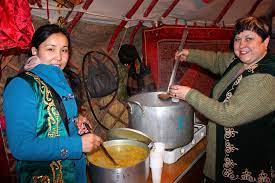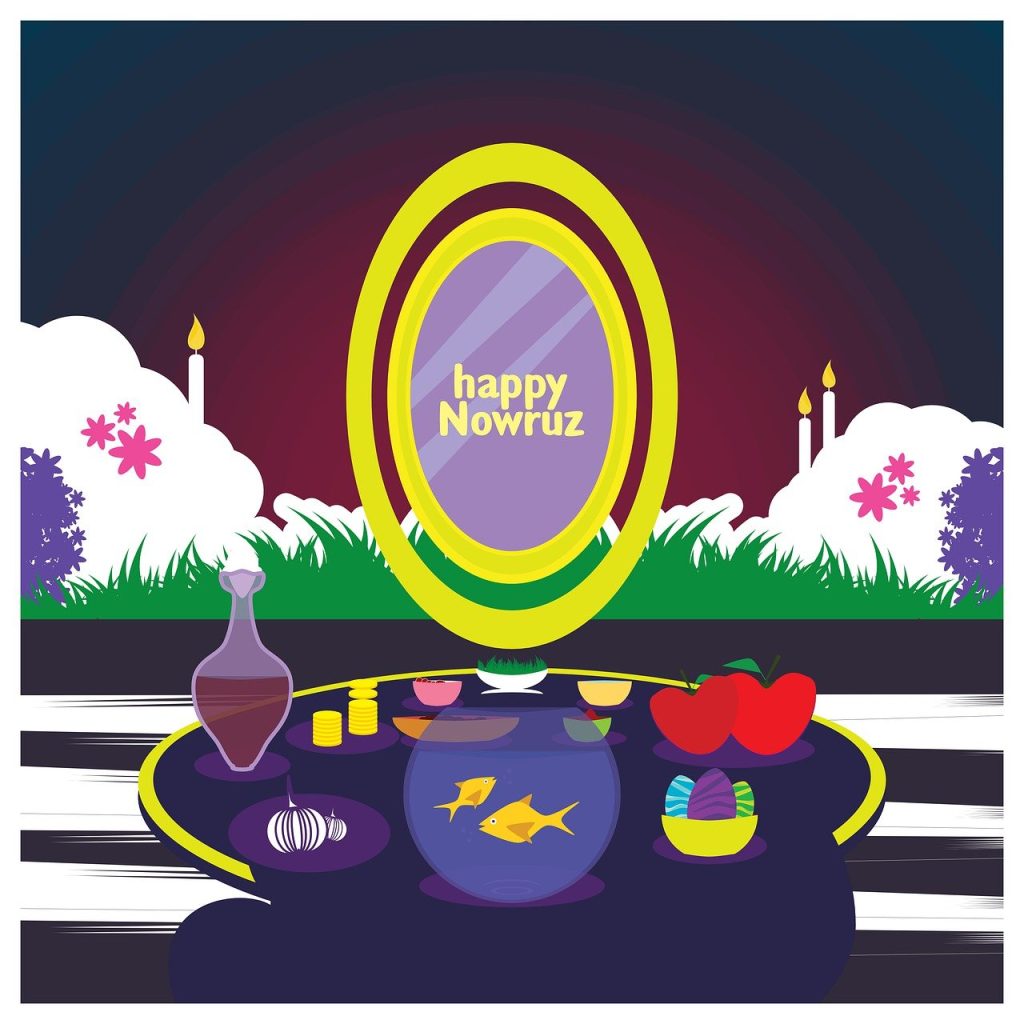Nowruz: The ancient Persian New Year
Nowruz, also spelled Norooz or Nowrooz (New day), ushers in the Iranian or Persian New Year. Celebrated by using various ethnic groups global, it’s a vibrant pageant steeped in subculture and symbolism. Marking the spring equinox, this day falls on or around March 21st at the Gregorian calendar, signifying a time of rebirth and renewal. This article delves into the wealthy history, customs, and significance of this age-vintage celebration.


What Everyone Knows About Nowruz (Persian New Year)
Iran: Where Nowruz Began
Iran is where Nowruz originated, and families are getting ready for the holiday by celebrating outside with music, kite flying, and lots of happiness. This custom emphasizes how important nature is to the this day celebrations and stands for a shared desire for good luck and the removal of evil.


The New Year in Central Asia
In the middle of Central Asia, Navruz stands out as a reminder of the area’s long history of nomadism. In Kazakhstan, Kyrgyzstan, and Uzbekistan, people party with a lot of energy. Horse races and wrestling show how strong people can be, and planting trees together shows a commitment to the earth’s health.
Afghanistan’s Nowruz
In Afghanistan’s green settings, families get together to make the “haft-mewa,” a delicious dish made of seven fruits. When you fly a kite, the sky is filled with dreams, and it reminds you of the shared happiness and community spirit that make up this festival..
Novruz in Azerbaijan
Azerbaijan welcomes Novruz with open arms, turning public areas into places where people can express their culture through music, dance, and acting out historical stories. The focus on spring cleaning, or “Khana Temiz Kara,” shows how eager a community is to start over and feel better as a whole.
Turkey’s Nevruz
Nevruz starts a culture rebirth in Turkey, especially in the eastern parts of the country. Families get together for special meals, and the night before Nowruz, bonfires light up the sky to show that good has won over evil.
The Celebration of the Diaspora
In the diaspora, Iranian communities all over the world bring Nowruz customs to life by being flexible and creative. Haft Sin tables become the center of celebrations when they are carefully set up with symbols that come from different countries but all speak the same language of renewal and hope.


Table of Contents
Traditions that Weave the Nowruz Tapestry
Sharif-Shanbeh Suri
People jump over bonfires during this fire holiday, which is held right before Norooz, to get rid of the darkness of the past and welcome the bright light of the future.
The Thirteenth Outdoors by Sizdah Bedar
Nowruz celebrations. It is a time to connect with nature, enjoy the company of loved ones, and build a strong connection with the land, which is seen as a way for everyone to grow and start over.
The Art of Giving Care
During Nowruz, people show kindness to each other by visiting the sick and old. This shows respect, acceptance, and the strengthening of ties between people in society.
The Joy of Giving: Giving gifts, especially the traditional exchange of money in pretty boxes between family members, is a way to wish someone a happy and successful new year.
New life through cleaning
As part of the custom of spring cleaning before Norooz, the old things are thrown out to make room for new spirits, hopes, and dreams to come into the home.
Nowruz: A Timeless Saga of Renewal
Nowruz is a celebration of hope that marks not only the start of a new year but also the ability of human groups to keep starting over. You can see how strong you are when you work together to make things better in your life and take care of the world as a whole.
Through its many customs and different landscapes, Norooz always brings to light the universal themes of rebirth, renewal, and the unbreakable bond of community. We think about the power of renewal and the endless opportunities that spring brings as we get ready to celebrate Nowruz.
Wishes for a Joyous Nowruz
May this this day bring us new hope, wealth, and togetherness, and bring us closer to each other and to the natural world that keeps us all alive. Let us keep celebrating this old Persian New Year with love, joy, and a sense of how beautiful our different cultures are. Have a great Nowruz! And let’s never forget that we all have the spirit of rebirth inside us. As we welcome spring and the new year, let us seize this chance to grow and start over in our own lives.
Setting up a Haft Sin Table (Seven items)
it’s a powerful symbol of the spirit of Norooz, representing rebirth, wealth, and how life goes in cycles. Each of the seven S’s—Sabzeh, Samanu, Senjed, Seer, Seeb, Somaq, and Serkeh—represents a different aspect of life and a different hope for the New Year.
Sabzeh ((sprouts): with its green buds, stands for new life and nature’s renewal.
Samanu (wheat pudding): A sweet cake called samanu stands for wealth and the sweetness of life.
Senjed (dried lotus fruit): This is the dried fruit of the orange tree, which stands for love and care. For health,
Seer (garlic): Representing warding off evil and protecting health.
Seeb (sumac berries): Representing beauty and health
Somaq: A spice made from dried berries, reminds us of the start of a new day,
Serkeh: Signifying patience and wisdom.
These parts work together to tell a story of hopeful anticipation for the New Year. They also help to ground the celebration of Nowruz in cultural heritage and personal ambition.
Frequently Asked Question
Q 1: How do you explain Nowruz? Why is it a holiday?
A 1: Often translated as “New Day,” Nowruz is the Persian New Year. It is a holiday that marks the start of spring and the vernal equinox. Millions of people celebrate it, mostly in Iran and among the Iranians who have left the country, but also in other Central Asian countries. Although many societies have adopted the holiday over the years, its roots are in Zoroastrianism. It represents rebirth, renewal, and the hopeful hope of better days.
q 2:What are the most important customs of Nowruz?
A2: As part of the customs of Nowruz, the Haft Sin table is set up. It has seven items, each starting with the Persian letter ‘س’ (S), and each one represents a different hope or wish for the new year. As part of celebrations, people also do Khan Takani, or spring cleaning, to get rid of the old and make room for the new. They also make special meals, visit family and friends, and give and receive gifts. People are encouraged to spend a day in nature by events like Sizdah Bedar, which takes place on the 13th day after Norooz.
q 3: How can someone who doesn’t come from a society that celebrates Nowruz take part in the holiday or learn more about it?
A: People who want to be a part of Nowruz can go to public events and festivals. These often have traditional music, dance, and food that give people a taste of the Nowruz mood. One important way to connect with the holiday is to learn about what Haft Sin means and try to make your own. Also, many communities are happy to have people who are interested in their traditions. Going to a Norooz celebration can be a great way to learn from people who have been enjoying it their whole lives. Around Nowruz, libraries and other cultural centers often have educational events that give people more chances to learn and get involved.


Amjad Mustafa, the owner and author of Keen2Know, is a highly qualified individual with strong experience in technical engineering. He is an experienced professional with a variety of business, technology, and car knowledge. His academic background prepared him for a diverse career and established him as a prominent figure at the intersection of these rapidly evolving industries.



